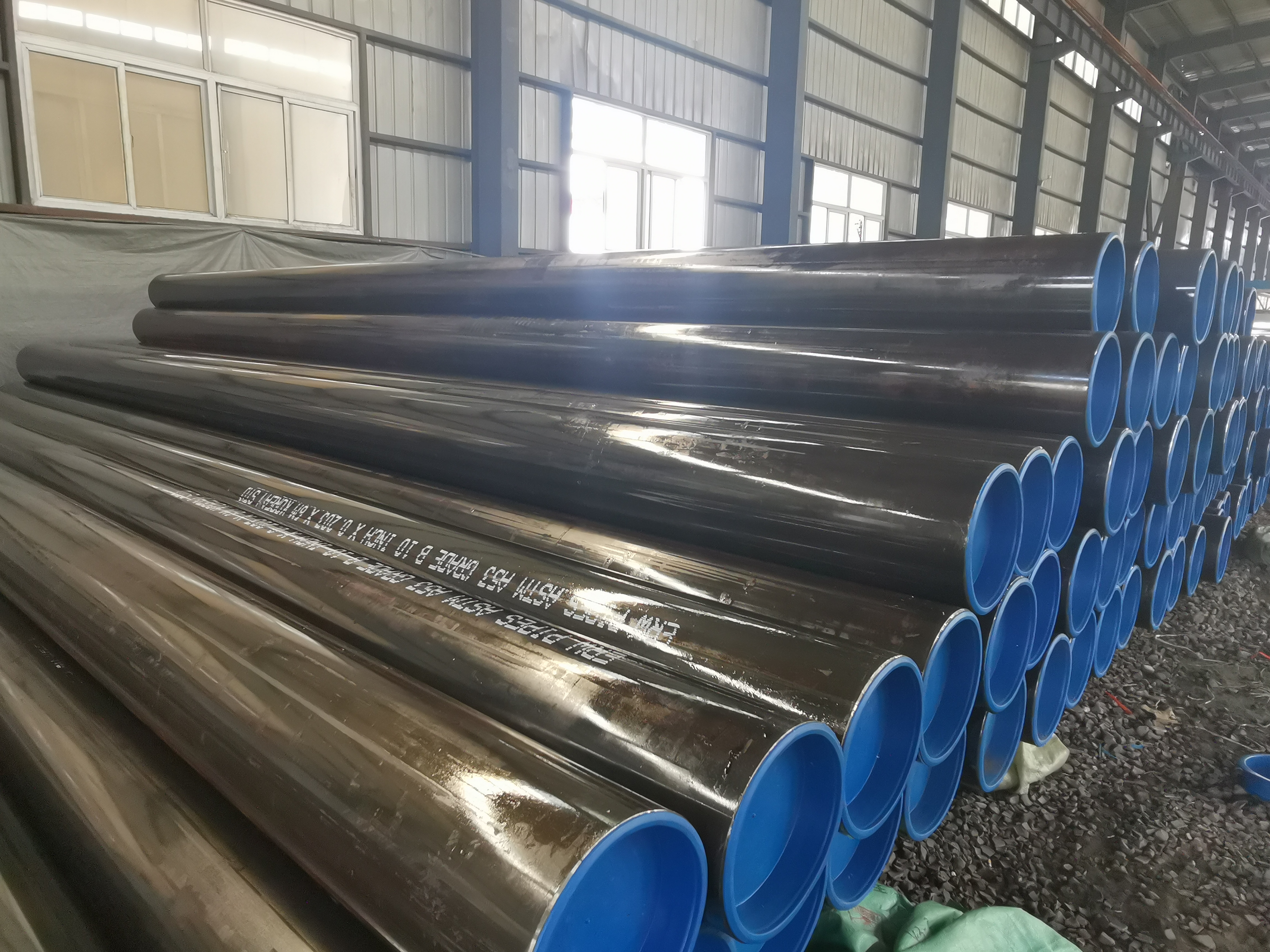The surface quenching and tempering heat treatment of ERW pipe is usually carried out by induction heating or flame heating. The main technical parameters are surface hardness, local hardness and effective hardened layer depth. Vickers hardness tester can be used for hardness testing, and Rockwell or superficial Rockwell hardness tester can also be used. The selection of the test force (scale) is related to the effective hardened layer depth and the surface hardness of the longitudinal welded pipe. There are three hardness testers involved here.
The Vickers hardness tester is an important means to test the surface hardness of heat-treated longitudinal welded pipes. It can use a test force of 0.5~100kg to test the surface hardening layer as thin as 0.05mm thick. Its precision is the highest, and it can distinguish the slight difference in the surface hardness of heat-treated workpieces. In addition, the depth of the effective hardened layer should also be detected by a Vickers hardness tester. Therefore, it is necessary to equip a Vickers hardness tester for units that carry out surface heat treatment or use a large number of surface heat treated Hunan straight seam welded pipes.

The surface Rockwell hardness tester is also very suitable for testing the hardness of the surface quenched workpiece. The surface Rockwell hardness tester has three scales to choose from. Various surface hardened longitudinal seam welded pipes with an effective hardening depth exceeding 0.1mm can be tested. Although the accuracy of the surface Rockwell hardness tester is not as high as that of the Vickers hardness tester, it can already meet the requirements as a detection method for quality management and qualification inspection of heat treatment plants. Moreover, it also has the characteristics of simple operation, convenient use, low price, rapid measurement, and direct reading of hardness values. Using the surface Rockwell hardness tester can quickly and non-destructively detect batches of surface heat-treated Hunan longitudinal welded pipes one by one. This is of great significance for lake seam welded pipe processing and machinery manufacturing plants.
When the surface heat treatment hardened layer is thick, the Rockwell hardness tester can also be used. When the thickness of the heat-treated hardened layer is 0.4~0.8mm, the HRA scale can be used, and when the thickness of the hardened layer exceeds 0.8mm, the HRC scale can be used.
The hardness values of Vickers, Rockwell and Superficial Rockwell can be easily converted to each other and converted into hardness values required by standards, drawings or users.
If the parts require high local hardness, local quenching heat treatment can be carried out by means of induction heating. Such longitudinal welded pipes usually need to mark the location of local quenching heat treatment and local hardness value on the drawing. Hardness testing of longitudinally welded pipes shall be carried out in designated areas. The hardness testing instrument can use a Rockwell hardness tester to test the HRC hardness value. If the heat-treated hardened layer is shallow, a surface Rockwell hardness tester can be used to test the HRN hardness value.
The Vickers hardness tester is an important means to test the surface hardness of heat-treated longitudinal welded pipes. It can use a test force of 0.5~100kg to test the surface hardening layer as thin as 0.05mm thick. Its precision is the highest, and it can distinguish the slight difference in the surface hardness of heat-treated workpieces. In addition, the depth of the effective hardened layer should also be detected by a Vickers hardness tester. Therefore, it is necessary to equip a Vickers hardness tester for units that carry out surface heat treatment or use a large number of surface heat treated Hunan straight seam welded pipes.

The surface Rockwell hardness tester is also very suitable for testing the hardness of the surface quenched workpiece. The surface Rockwell hardness tester has three scales to choose from. Various surface hardened longitudinal seam welded pipes with an effective hardening depth exceeding 0.1mm can be tested. Although the accuracy of the surface Rockwell hardness tester is not as high as that of the Vickers hardness tester, it can already meet the requirements as a detection method for quality management and qualification inspection of heat treatment plants. Moreover, it also has the characteristics of simple operation, convenient use, low price, rapid measurement, and direct reading of hardness values. Using the surface Rockwell hardness tester can quickly and non-destructively detect batches of surface heat-treated Hunan longitudinal welded pipes one by one. This is of great significance for lake seam welded pipe processing and machinery manufacturing plants.
When the surface heat treatment hardened layer is thick, the Rockwell hardness tester can also be used. When the thickness of the heat-treated hardened layer is 0.4~0.8mm, the HRA scale can be used, and when the thickness of the hardened layer exceeds 0.8mm, the HRC scale can be used.
The hardness values of Vickers, Rockwell and Superficial Rockwell can be easily converted to each other and converted into hardness values required by standards, drawings or users.
If the parts require high local hardness, local quenching heat treatment can be carried out by means of induction heating. Such longitudinal welded pipes usually need to mark the location of local quenching heat treatment and local hardness value on the drawing. Hardness testing of longitudinally welded pipes shall be carried out in designated areas. The hardness testing instrument can use a Rockwell hardness tester to test the HRC hardness value. If the heat-treated hardened layer is shallow, a surface Rockwell hardness tester can be used to test the HRN hardness value.









